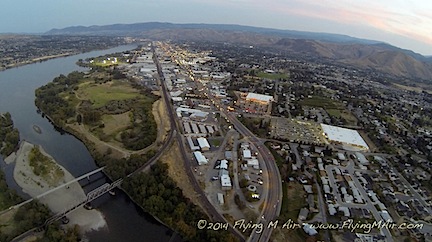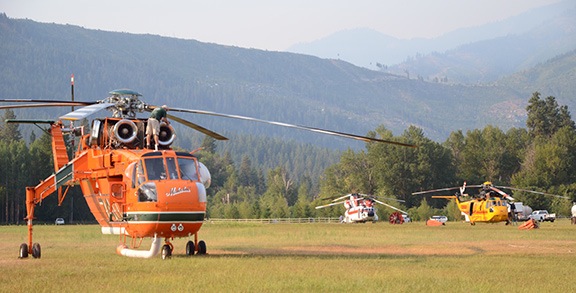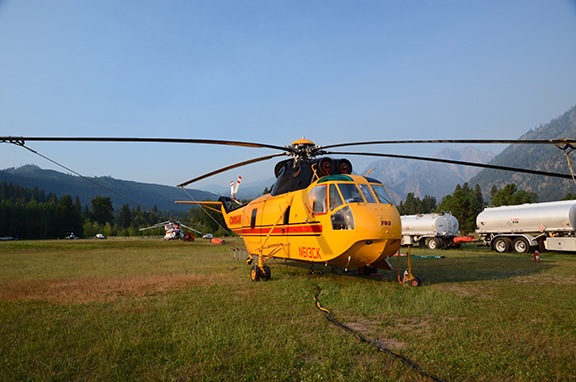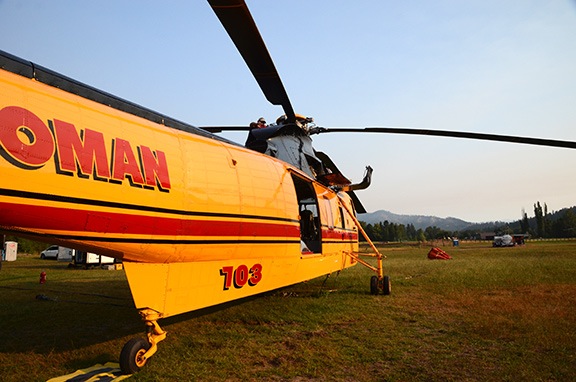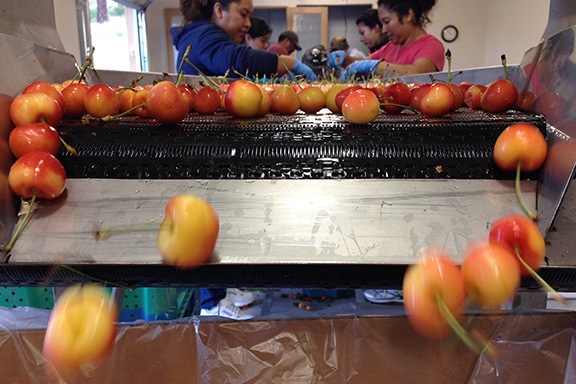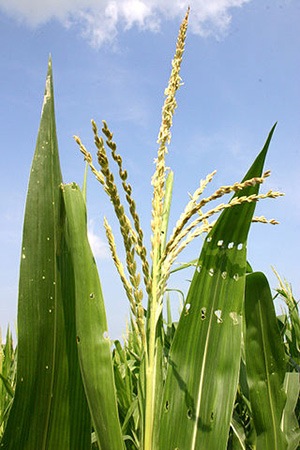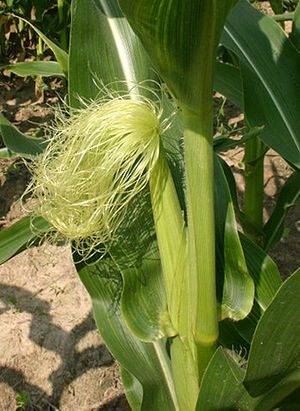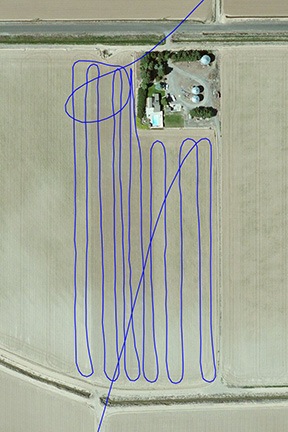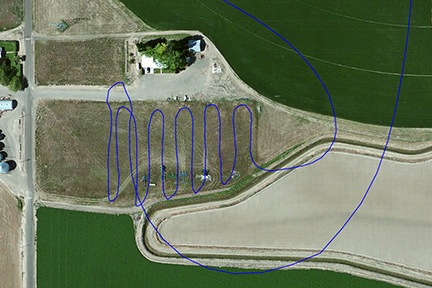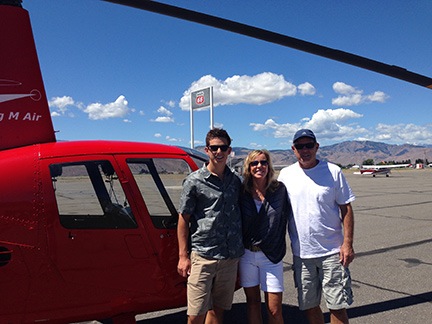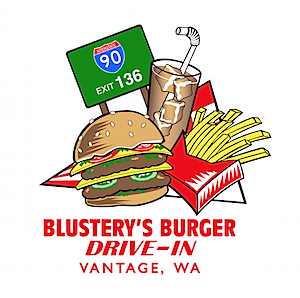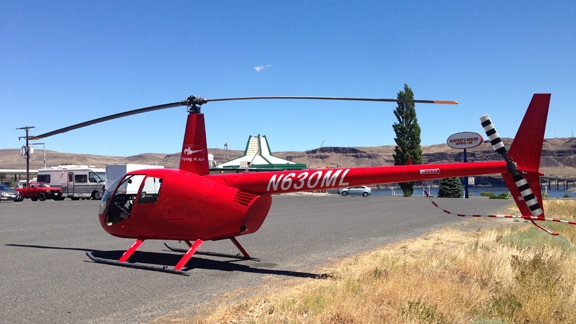Sometimes I can really pack it in.
Yesterday was one of those days when there’s simply no rest. Here’s a quick rundown.
A Natural Alarm Clock
I woke at 3:50 AM. It was the sound of three drops of rain hitting my RV roof that woke me. This was an unusual sound that I hadn’t heard in weeks and it took a moment for my sleeping mind to register why it was important.
Rain.
I’m on contract to dry cherries.
I was wide awake in a flash, reaching for my iPad, summoning the radar. Yes, it was drizzling on me, but was it raining on my orchards 5 miles to the west?
Not yet, the radar told me. But there was rain in the area.
I lounged in bed for a while, reading, catching up on Facebook crap (which I’m convinced has become a sick addiction for me, since I get very little pleasure out of it), and checking my calendar for the day. I had three things scheduled: a meeting with my earth-moving guy about the ground work for my utility connections at 7:30 AM, a charter flight at 8:30 AM, and an invitation to help a friend pack Rainier cherries at 10:00 AM.
But the rain made things a lot less solid. Getting called to dry cherries took precedence over anything else I might have to do.
Earth-Moving Plans
Jeff Parks, the guy who had installed my septic system last year and did all the earth work in preparation for my building, arrived at 7:30 sharp. By then, it was drizzling again.
I outlined what I needed and he suggested ways to get the job done. That’s one of the things I like about Jeff — if you want to do something one way and he has a better way, not only will he suggest it, but he’ll explain why it’s better. He’ll also take the time to go over the pros and cons of the different materials that can be used.
In my situation, I need to run a water line from the city water source to my building and my shed, an electric conduit from my transformer box to my building and my shed, and a septic system line from the takeout near the building to the building. I also wanted to install a second takeout near the shed so I could create a complete RV hookup there for guests. I wasn’t in a hurry to get this done, but I did hope to have it finished by August month-end, which was fine for Jeff.
We decided that I’d buy the materials with a shopping list he provided. I already had much of the conduit and pipe I needed. He’d get back to me with a solid estimate.
The Charter
My charter client knew I was a cherry drying pilot and called while Jeff was there to make sure we were still on for the flight. I told her we were, then told her that I’d call her cell phone if I needed to cancel.
But I didn’t have to cancel. At 8:20, I said goodbye to Jeff, locked Penny in the RV, and hopped into the helicopter. Ten minutes later, I was shutting down at Pangborn Airport across the river, ready to greet my passengers.
My passengers were two fruit buyers from the midwest that my client was entertaining during a visit to the orchards. I’d done short tours for a handful of the client’s guests last year. This year there were only two of them and the client didn’t mind my one-hour minimum. I’d pick them up at Wenatchee Airport, take them on a scenic flight around the area, and drop them off at Quincy Airport where my client would be waiting.
My passengers were pleasant men who really seemed to enjoy the flight. They asked me to show them a new orchard being planted north of the airport on some old wheat fields — I didn’t even know it was up there! Then we headed down river, past the Rock Island dam. I pointed out the features now visible due to the low water levels. (The Wanapum Dam is still being repaired so the lake level is extremely low and closed to the public.) We saw Crescent Bar, the Gorge Amphitheater, Cave B Inn and Winery, and Sunland before turning and heading back over Frenchman’s Coulee, Quincy Lakes, and Quincy. One of the passengers obviously knew the area very well because he kept pointing out various orchards and packing/storage facilities around us. After 45 minutes, I landed at Quincy where their ride was waiting. The last 15 minutes of their hour would get me back to Wenatchee.
Packing Cherries
Of course, I didn’t go back to Wenatchee Airport — or home. Instead, I flew to the orchard where my friends Donn and Kathryn were using their cherry packing line for the very first time. The reason I flew instead of driving there was because there was still rain possible and it would have taken 30-40 minutes for me to drive home (or to the airport for that matter) if I were called out to fly. By flying there, the helicopter was only 5 minutes away so I’d be able to respond quickly if called.

Packing cherries can be labor-intensive, too.
The packing line was set up in a new building near their house on the orchard. There was a huge walk-in refrigerator where cherries picked the previous day and that morning had been stored. Then a conveyor belt that would take cherries from an ice water bath past quality control people who’d pick out the bad ones. Finally, the cherries came out on the far end where they fell into plastic-lined boxes.

At the end of the line, the cherries dropped into a box.
I shot this little video to show how the cherries moved down the line.
The quality control people worked at a feverish pace, picking out cherries that weren’t “perfect.” They checked for things like size, color, splits, bird pecks, and mold/fungus. Even stems — if a cherry didn’t have a stem attached, it was rejected. (I ate a lot of those.) The line moved quickly; we probably packed at least 10 pounds per minute.
My job was to work with Kathryn to fill the boxes, make sure they weighed 16 pounds (15 pounds of cherries plus the weight of the box and excess water), close them up, and put them on a pallet. The trickiest part was pulling one box away while putting an empty one in its place. It required the two of us to work in harmony to prevent cherries coming off the line from falling on the floor. It took us a few tries, but we finally got it working perfectly. We joked that she was Lucy and I was Ethel.
Drying Cherries
It started to rain while I was there. Then the inevitable phone call from one of my two clients still on contract. Could I dry, please? Fortunately, my helicopter was parked right across the street from the orchard. I excused myself from Kathryn and Donn and walked down the hill to where I was parked. On the way, I ran into the orchard owner. I told him I’d been helping with the cherry packing in the new shed and expected rain so I’d flown over.
I was airborne when the second client called. I was now responsible for flying over about 90 acres of cherries — about my limit for the 2-1/2 hours allotted.
I called Mike, my backup pilot. Although he was off-contract, he was in the Quincy area and could, theoretically, fly up to help out. But he was having engine trouble with his motorhome and needed to sort that out. So I tackled it on my own.
I flew until I was low on fuel — remember, I’d burned an hour’s worth that morning — then refueled at the airport 5 minutes away and flew until I was done. I explain what cherry drying is all about in other blog posts; click the cherry drying tag to learn more.
Back to Packing

I don’t know…do you think swimming is allowed here? Sky looks nasty, huh?
Afterwards, I landed back near Donn and Kathryn’s house, but this time on a dam around a reservoir in the orchard. I walked down to the packing shed where they were all still working. Kathryn took one look at me and asked, “Are you hungry?”
“I was hoping you’d ask,” I replied.
She brought me into the house and let me loose on salad fixings everyone else had had a while earlier. I made myself lunch and ate it alone while she went back down to work. Then, after a quick trip to the loo, I went back out to help.
Other helpers had taken my previous job so I filled in where needed, giving people breaks as they needed them. In the end, I wound up right where I’d started with Kathryn beside me. That’s where we were when the last few cherries came down the line. We all cheered. They’d packed 420 15-pound boxes — over 3 tons of cherries.
We cleaned up immediately. Extra cherries were handed out. The packing line ladies left. I passed on the cherries, preferring to come back later in the week to pick my own from the same trees — pickers aren’t always thorough. I’d get some blueberries that day, too. Kathryn invited me to join them for dinner in town later on. She’d text me. I looked forward to it, but not nearly as much as I looked forward to taking it easy at home.
When I flew off, the refrigerated truck that would take the cherries to Seattle had just arrived.
A Short Rest
At home, Penny the Tiny Dog was happy to see me. She always is.
I took it easy for a while. I made some soup and watched a documentary about abandoned cities on Netflix.
Kathryn called to tell me they’d decided on Pybus Bystro at 6:30. I told her I’d come if the weather held.
A friend called and I spent a half hour chatting with him. Then I noticed the weather was changing again. One look at the radar and I cut the call short.
I went outside and topped off the helicopter’s fuel tanks with 100LL from the tank on my truck.
I texted Kathryn and told her I wouldn’t be joining them after all.
More Cherry Drying
My other client called first this time. It was about 6 PM when I launched. The second call came while I was enroute.

I hadn’t gotten very far when it started raining. Again.
The orchards are only 5 minutes away by air. I settled in over the trees of the big orchard and was at work for less than 15 minutes when I decided to track the flight with GPSTrack.
I was only 16 minutes into the logged part of the flight when it started to rain. Hard.
I flew over to a friend’s house and landed in his driveway, knowing he was out of town. I called my two clients and told them that I’d wait until it stopped or 7 PM, whichever came sooner. If I re-started after 7, I’d never finish before it got dark. Even then, it was iffy.
It was still raining at 6:55 PM when I started back up.
I speed-dried. I knew I’d never get it all done thoroughly, but I figured I could get most (or all) of it done if I was a bit less thorough. The result wasn’t as good, but was better than leaving 20 or 30 acres completely uncovered. Partial coverage was better than no coverage. Besides, rain was expected overnight and I was likely to be called out first thing in the morning.

In speed drying, I go down every third aisle instead of every second. Sometimes I do every third one way and every second the other. Less coverage is better than no coverage. Keep in mind that this satellite image is three years old; the orchard configuration is a bit different these days.
I got through all of the big orchard and one of the two smaller orchard’s blocks. By then, it was getting dark. The sun had set around 8:45 PM and clouds on the western horizon made it darker than it would normally be. My landing zone at home wasn’t lighted and I really didn’t want to land in the dark. I also didn’t want to hover five feet over cherry trees in hilly terrain in semi-darkness with a windscreen full of raindrops. So I let the last orchard block go.
It was drizzling when I headed home.
Home
The helicopter was lit up like a Christmas light parade float on the flight home. Strobe light (required during flight), navigation lights (required after sunset), landing light, pulsing lights on my skid shoes. I wouldn’t be surprised if neighbors called me in as a UFO. But it felt good to get on the ground, especially since I knew I was done for the night.
I shut down, let Penny out for a run, and then went in. My friend Bob called while I was pouring a glass of wine. We chatted for a while and I invited him to join me Thursday evening to pick cherries and blueberries. It was after 10 PM when he reminded me that I’d probably be up early.
I finished my wine and went to bed, exhausted.
It had been a very full day.
